
views
X
Expert Source
Joanna KulaSkincare Specialist
Expert Interview. 9 July 2019.
To integrate coconut oil into your skin care routine, start by selecting coconut oil that is organic and safe for your skin. Then, apply the coconut oil with clean fingers to soothe dry, irritated skin. You can also use coconut oil in face masks to add more moisture to your skin.
Selecting the Coconut Oil
Consider your skin type before using coconut oil. While coconut oil can be a great moisturizer for some people, it may not be the best choice for others. Coconut oil may be suitable for dry or normal skin types. If you have oily or acne prone skin, use coconut oil sparingly or choose another natural treatment, such as tea tree oil or aloe vera gel. Applying coconut oil to skin that is already oily may worsen the problem, as it is highly comedogenic and has the potential to clog pores.
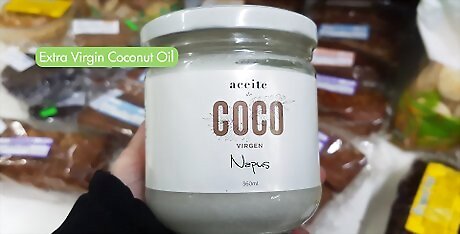
Look for organic, extra virgin coconut oil. Getting coconut oil that is organic will ensure it contains no GMOs. Extra virgin coconut oil is more pure than virgin oil, so it does not have any preservatives or additives that could irritate your skin. Shop for extra virgin coconut oil at your local health food store or online.
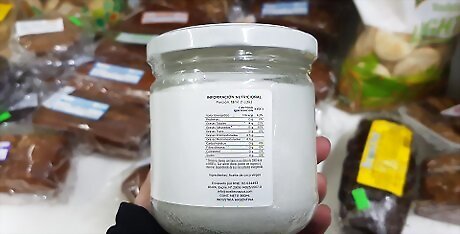
Make sure the oil is unrefined and unprocessed. Check the label on the coconut oil to ensure it has not been hydrogenated, bleached, refined, or deodorized. Getting it unrefined and unprocessed will ensure it is of the highest quality. You may notice that the label says “cold-pressed.” This is a natural process for extracting the oil and it is not the same thing as processed or refined.
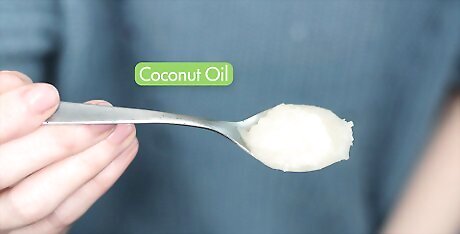
Get coconut oil in solid form. Coconut oil is usually sold in glass bottles in a solid state. It may appear thick and white in the bottle. Make sure you store the coconut oil in a cool, dark place in your home, preferably at 76 °F (24 °C), so it maintains a solid state. A bathroom drawer or cupboard is a good storage spot. It does not need to be refrigerated to stay fresh.
Applying the Coconut Oil

Wash your face. Use your regular cleanser to remove any dirt, dead skin, and bacteria from your face. Rinse off your cleanser with warm water, as warm water helps to open your pores.
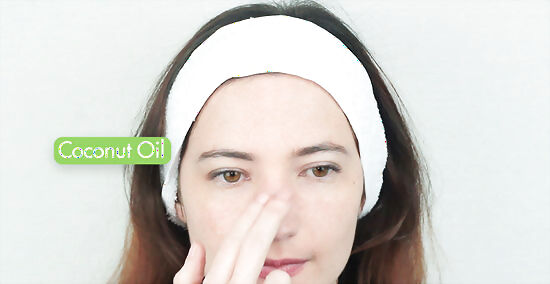
Dab 1 teaspoon (4.9 ml) of oil onto your face. Use clean fingers to scoop out a teaspoon of coconut oil from the bottle. Then, dab it onto your forehead, cheeks, nose, upper lip, and chin. Use circular motions to gently spread it on your skin. The oil should melt and become more liquid as you spread it due to the heat of your fingers. If you are concerned you may be allergic to coconut oil, apply a small amount to your jaw line. Wait 24 hours. If your skin does not react badly in that time span, it is likely safe to use.

Let the oil dry and absorb into your skin. It should take no more than one minute for it to dry. Once it has absorbed, you should not feel any greasy residue on your skin. Due to the properties of coconut oil, it will dry fast without residue.
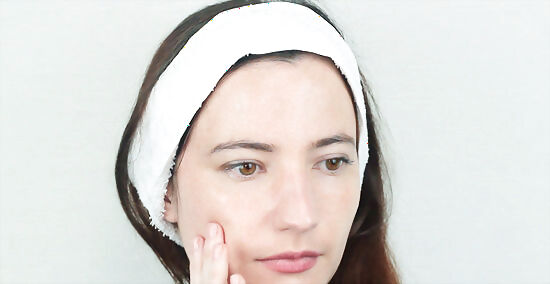
Apply the oil once a day, or as needed. Integrate it into your normal skincare routine, applying it once a day after washing your face in the morning or at night. If you notice dry patches on your skin, apply the coconut oil as a spot treatment to these areas. If you have very dry skin, you may apply it after washing your face once in the morning and again at night.

Stop using coconut oil if you have breakouts. If you notice any pimples, bumps, or acne appears on your skin after you start using coconut oil, stop applying it. Speak to your dermatologist for advice on moisturizers that will work with your skin type.
Using the Coconut Oil in Face Masks

Make a face mask with honey and lemon. Combine 1 tablespoon (15 ml) of liquid coconut oil, 2 tablespoons (30 ml) of raw, unprocessed honey, and ⁄2 tablespoon (7.4 ml) of lemon juice in a small bowl. Apply the mask to your face and let it sit for 10 minutes. Then, rinse it off with cool water and pat your face dry with a towel. This mask is great for brightening up dull or dry skin.
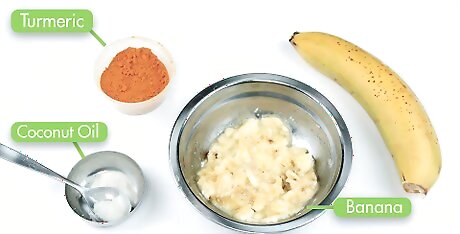
Try a moisturizing mask with banana and turmeric. Mash ½ a banana in a bowl. Then, add together 1 tablespoon (15 ml) of coconut oil and a pinch of turmeric. Stir to combine. Apply the mask to your face with clean fingers and let it sit for 15 minutes. Then, rinse it off with cool water and pat your face dry with a towel. This is a great mask for moisturizing your skin and removing acne-causing bacteria. If you have oily skin or if you are prone to acne, use just a few drops of oil instead of an entire tablespoon.
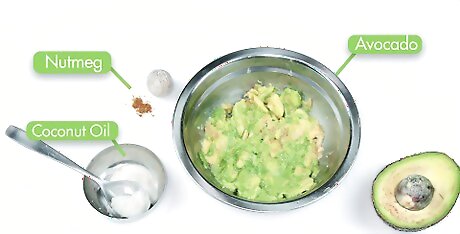
Prepare an avocado and nutmeg mask. Mash ¼ of an avocado in a bowl to form a smooth paste. Then, add 1 tablespoon (15 ml) of coconut oil and ⁄2 tablespoon (7.4 ml) of nutmeg to the bowl. Put the mask on your face with clean fingers and allow it to sit for 15 minutes. Rinse if off with cool water or a warm washcloth. Dry your face with a clean towel. Avocados are a great source of nutrients, healthy fats and antioxidants, so an avocado mask can help to soothe, soften and moisturize the skin. This mask is particularly good for moisturizing your skin and preventing future breakouts if you have dry skin.



















Comments
0 comment